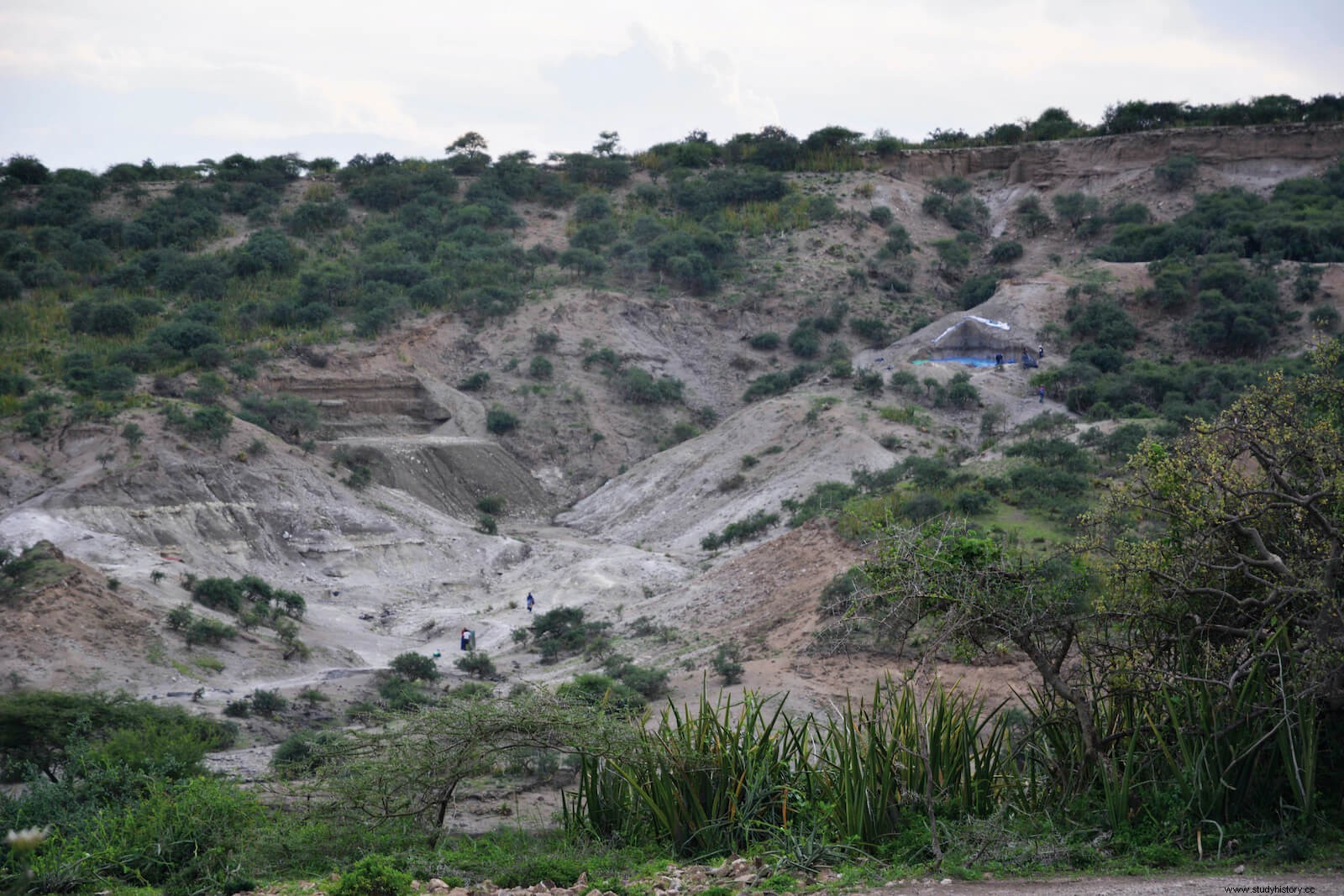
The second half of the 20th century was a revolution with regarding our knowledge of human origins, positioning the African continent as the cradle of humanity, an idea that has persisted to this day. It was the researchers Mary and Louis Leakey who began systematic archaeological work in the Olduvai Gorge (Tanzania) and continued throughout their scientific life.
During all this time the Leakeys discovered numerous fossil remains, among which we would highlight the definition of two species of hominins, Paranthropus boisei and Homo habilis. The latter is the oldest representative of our genus, and appears associated with stone tools and bone remains of other mammals.
The Leakeys did not take long to suggest that it was the skill of the hominin found that had led him to make instruments in rocks that abound in the environment (lava, quartzite), through the application of a force in a punctual way (carving) in order to have smaller fragments with sharp edges with which to separate the muscular masses of the animals that they consumed, or simply use those rocks to fracture the bones.
It will be the excavations in the area of FLK (Frida Leakey Korongo) in Olduvai where Mary Leakey found the remains of Homo habilis , the lithic objects transported from the nearby environment and modified, along with a large number of fractured bones from different animals:elephant, hippopotamus and different bovids.

The most plausible explanation given at the time was that Homo habilis he was the author of the transport and modification of the stones, as well as the hunting or scavenging of the different animals that are documented. Therefore, FLK was the place that the hominins had chosen to consume the carcasses of the scavenged animals and share the food with the rest of the individuals in the group. Equally surprising was the antiquity of all these archaeological remains, with more than 1.8 million years.
Our research project focuses on the same area of FLK although a little further to the west (FLK West) and in it we are excavating one of the strata located above the one excavated by the Leakeys. In the case of our site, with a chronology of around 1.5 million years, the protagonist is Homo erectus , descendant of Homo habilis . We have found carcasses of large mammals –elephant, hippopotamus, among others– associated with typical lithic objects from the Acheulean period.
Apart from the great relevance of the remains that we are finding, the excavation methodology must be underlined, in which everything from small stone fragments of just 2 centimeters to the skulls of large mammals. All this is positioned in 3D, which allows the archaeological remains to be restored in their original position, so that they can be studied not only today but also by future generations of archaeologists.
These works at FLK West in Olduvai allow us to make much more realistic interpretations of the way of life and daily activities of Homo erectus and the Acheulean, which we hope to be able to continue investigating in the coming years.
